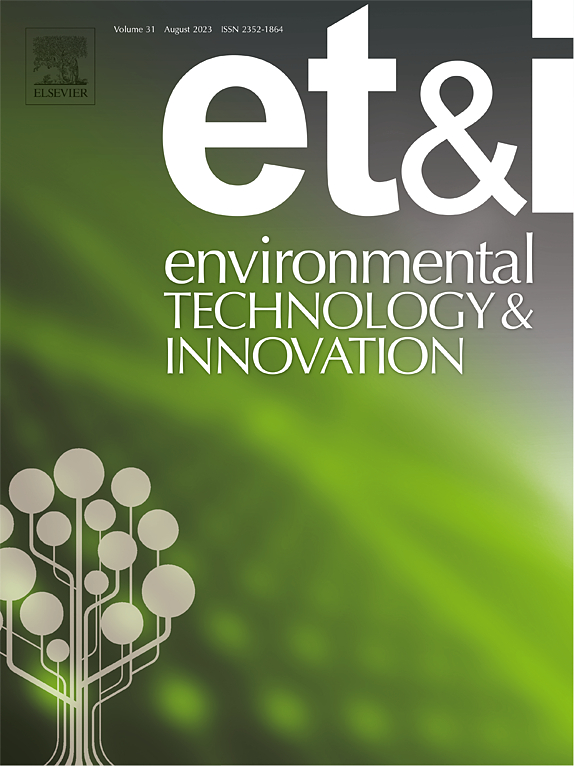Enhanced pyrite bioleaching through the synergistic interactions between Sulfobacillus thermosulfidooxidans and Alicyclobacillus ferrooxydans
IF 6.7
2区 环境科学与生态学
Q1 BIOTECHNOLOGY & APPLIED MICROBIOLOGY
引用次数: 0
Abstract
With the growing challenges of resource shortages and environmental pollution, bioleaching has attracted increasing attention for its high potential in processing refractory and low-grade ores. However, the slow growth rate and low biomass production of autotrophic bacteria commonly used in bioleaching limit their industrial application. Here, based on high-throughput sequencing analysis, which revealed a strong positive correlation between Sulfobacillus and Alicyclobacillus in mining environments, we developed a mixed-bacterial system composed of Sulfobacillus thermosulfidooxidans and Alicyclobacillus ferrooxydans to enhance the efficiency of bioleaching. The mixed-bacterial system achieved a pyrite leaching rate up to 91.14 %, compared to 67.54 % by S. thermosulfidooxidans and 17.63 % by A. ferrooxydans. The improved leaching performance was attributed to the increased production of total extracellular polymeric substances (EPS), higher cell density and stronger redox capacity in the bioleaching solution. This study contributes to the development of a greener and more sustainable metallurgical industry.
求助全文
约1分钟内获得全文
求助全文
来源期刊

Environmental Technology & Innovation
Environmental Science-General Environmental Science
CiteScore
14.00
自引率
4.20%
发文量
435
审稿时长
74 days
期刊介绍:
Environmental Technology & Innovation adopts a challenge-oriented approach to solutions by integrating natural sciences to promote a sustainable future. The journal aims to foster the creation and development of innovative products, technologies, and ideas that enhance the environment, with impacts across soil, air, water, and food in rural and urban areas.
As a platform for disseminating scientific evidence for environmental protection and sustainable development, the journal emphasizes fundamental science, methodologies, tools, techniques, and policy considerations. It emphasizes the importance of science and technology in environmental benefits, including smarter, cleaner technologies for environmental protection, more efficient resource processing methods, and the evidence supporting their effectiveness.
 求助内容:
求助内容: 应助结果提醒方式:
应助结果提醒方式:


